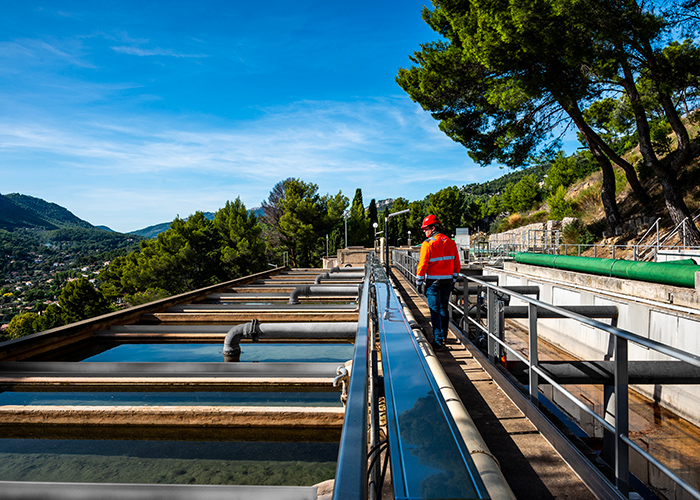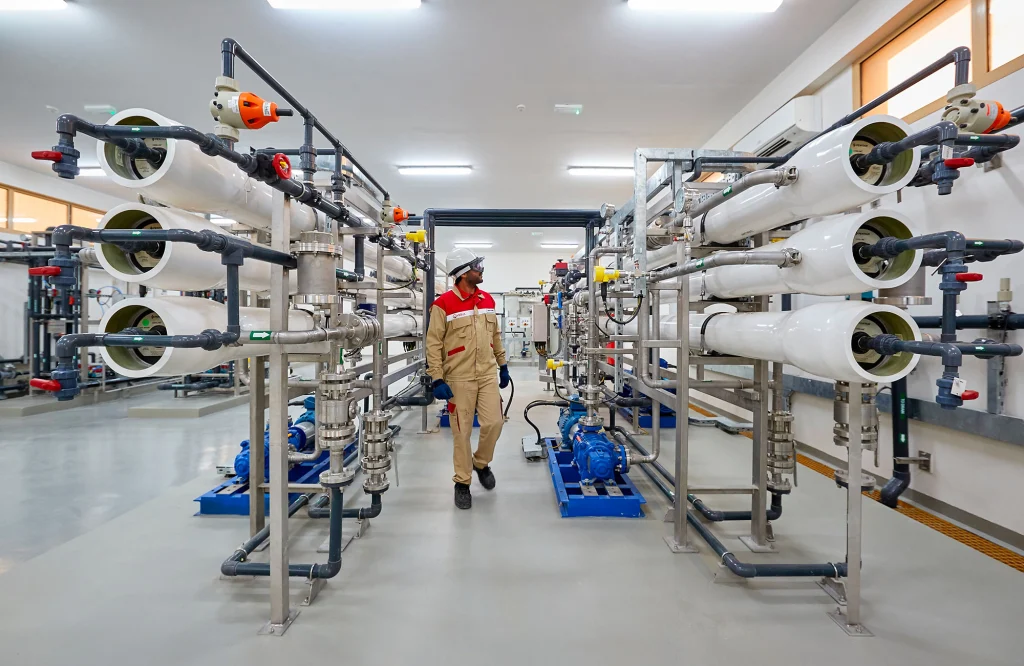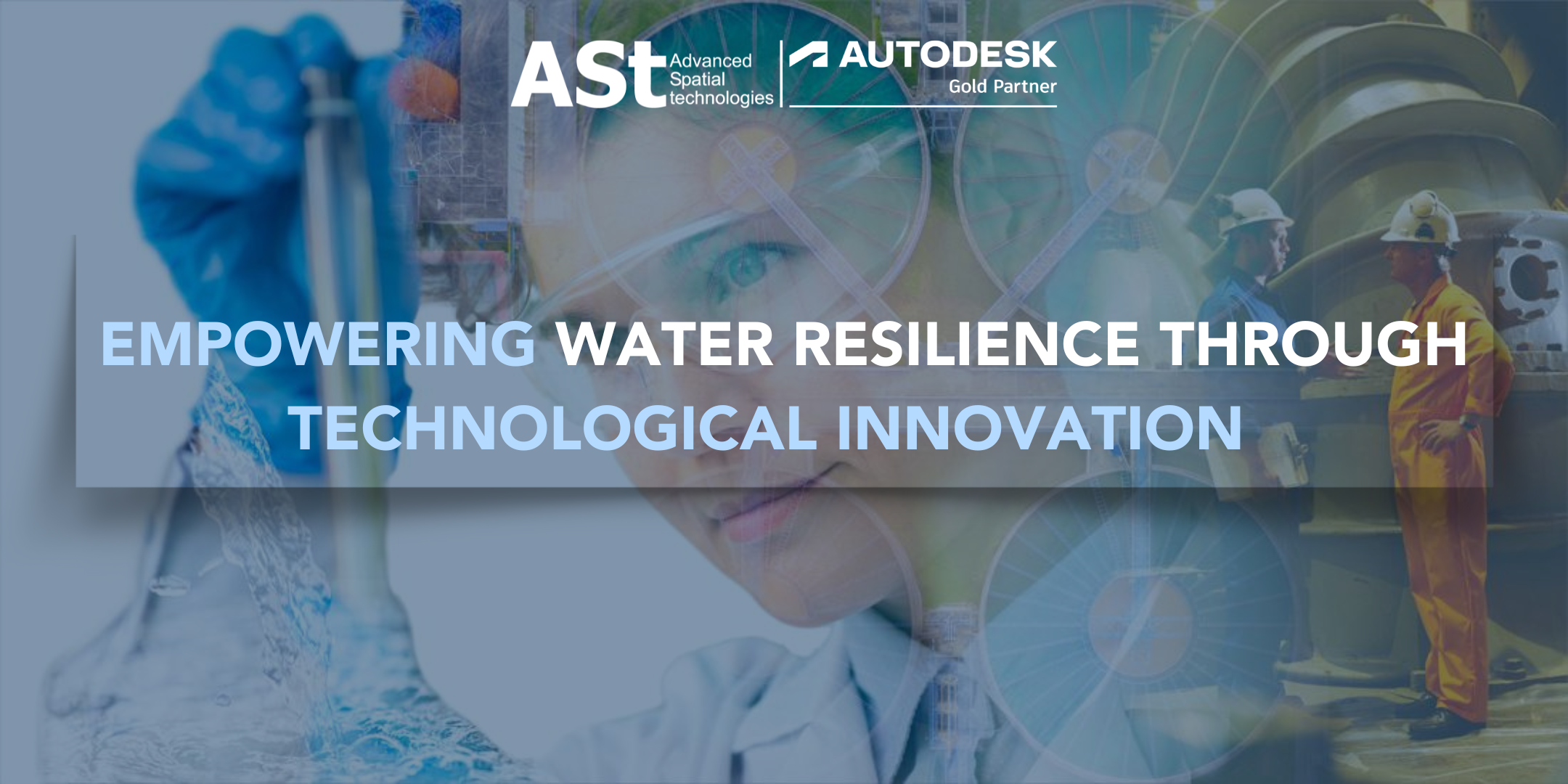- As the cleanup continues from summer 2021’s devastating deluges in Germany, Belgium, and China, it’s more important than ever for water utilities to continue fortifying their systems against future tragedies.
- When “once in a lifetime” weather events happen every few months, it’s clear that traditional risk-management techniques aren’t enough.
- Water utilities need to embrace digital, both to better manage current infrastructure when disaster strikes and to create more resilient plants in the future.
The flash floods in China, Germany, and Belgium took a horrific toll in the summer of 2021. With recovery operations still underway, talk has naturally turned to the future. How can municipalities prepare for the extreme weather that climate change is triggering with alarming regularity?
Lamia Messari-Becker, a civil-engineering professor at Germany’s University of Siegen, told Deutsche Welle in July 2021 that vague discussions about adapting to potential climate impacts aren’t enough anymore: “Now is the time for engineers. We need real ideas and real solutions.”

BIM and cloud technology are helping improve the management of municipal water infrastructure around the world.
What Is Water Resilience?
Water resilience refers to the ability to plan for, mitigate, and respond to floods, hurricanes, droughts and other catastrophic climate events that can impact infrastructure.
Fortunately, forward-thinking engineering and construction firms around the world are already on the case. By using digital water-management strategies, they’re improving utility operations to ensure greater water resilience and sustainability.
A combination of building information modeling (BIM) and cloud technology is helping overhaul aging plants and improve the management of municipal water infrastructure from Brazil to Bordeaux. Existing resources are being optimized, and new facilities are being constructed with extreme weather and strengthened wastewater measures in mind.
Water Resilience Depends on Data
At Veolia Water Technologies—a division of global water, waste, and energy-management giant Veolia—the company’s developers are working on new ways to prepare cities for the inevitable. They’re applying digital and Internet of Things (IoT) technologies and predictive analytics to build water-resilience-management techniques such as flood modeling, sustainable drainage design, clean water distribution, and resource optimization.
Although replacing water plants, tanks, reservoirs, and pipes takes years—even decades—Veolia’s digital solutions are helping utilities improve risk management for the infrastructure they have now, even as they plan the water networks of the future.

Veolia’s solutions are helping utilities improve risk management now, rather than waiting years to replace their current infrastructure. Courtesy of Veolia Water Technologies.
“When we talk about flooding in big cities, it’s usually an issue with the volume capacity of the network,” says Elise Le Vaillant, strategic deployment director at Veolia Water Technologies. “At some point in a sustained heavy rainfall, the network just won’t accept any more. Along with flooding, rainwater can mix with untreated sewage and spill into the street, spreading bacteria and risking disease and infection.
“I was in Copenhagen [Denmark] during the flooding there a few years ago,” she continues. “And some people were saying, ‘We just need bigger pipes to send excess water outside the city.’ But then others were saying that this was a once-in-a-century event, so it didn’t merit a huge system overhaul.”
That’s a debate that needs to play out in many cities, she says, but in the meantime, things can be done to make existing infrastructure more resilient to floods, as well as more sustainable.
“With our solutions, we can, for example, use weather-forecast data to anticipate where heavy rainfall will be concentrated,” Le Vaillant says. “Sensors in the network can tell us if the tanks in those areas are already full or likely to overflow. The utility company can use that information and take preventative steps ahead of any potential flooding.”

Can bigger pipes help send excess water outside cities? Perhaps. But only if infrastructure becomes more resilient first. Courtesy of Veolia Water Technologies.
Building Future-Proof Water Networks
Veolia Water Technologies develops its own solutions for water management. According to Veolia CAD Tools and BIM Manager Sifdin Barkaoui, the company uses the most performant BIM technologies to produce and manage 3D models, relying primarily on Autodesk solutions, including BIM 360, Revit, AutoCAD Plant 3D, Navisworks, Recap, and Inventor.
He points to a large project in the Paris region where Revit and BIM 360 were used as the primary collaboration platforms during construction. At the end of the project, the client wanted a digital twin, so Veolia built an openBIM data structure that enabled the twin’s creation and seamless handover to the client after construction.
The model will be used to improve maintenance operations, increase the safety of plant engineers, and minimize operational risks that could impact the plant’s performance.
“It’s a huge improvement over the 2D paper formats you still see used in some old plants,” Barkaoui says. “For instance, BIM allows you to predict the impact of the shutdown of a pipeline in a few clicks by highlighting the whole network in 3D, which greatly facilitates decision-making.”
Ready to subscribe to AutoCAD?
Call us: (08) 9367 2888
Email us: sales@advancedspatial.com.au





